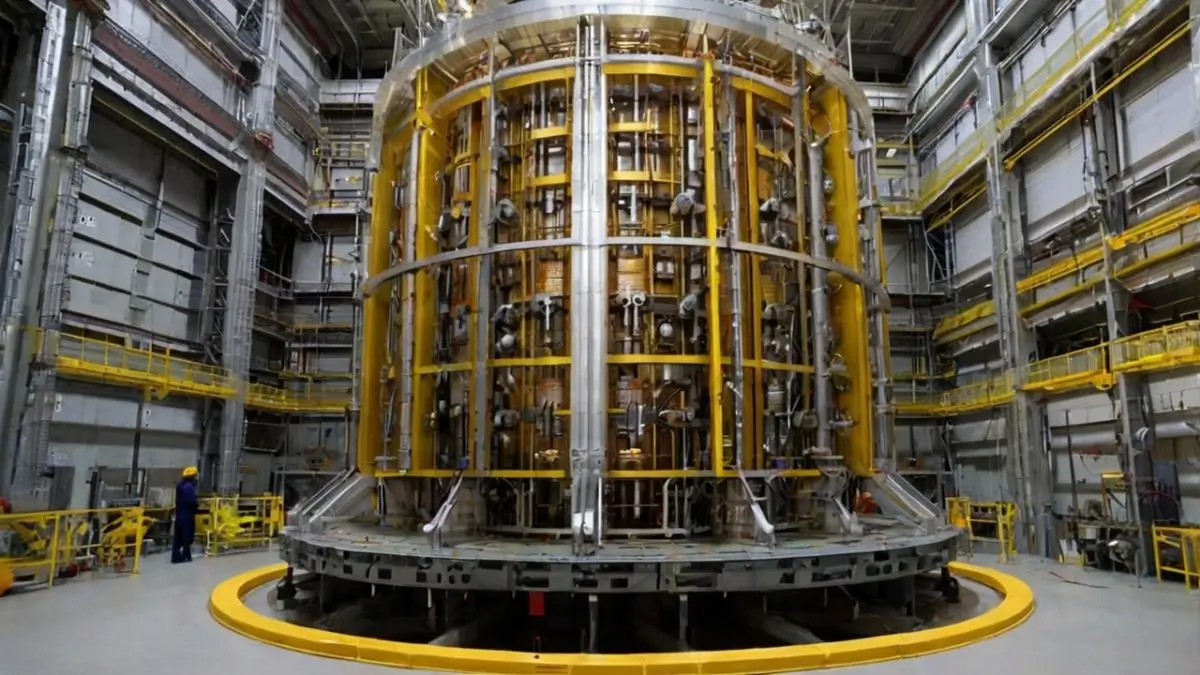The International Thermonuclear Experimental Reactor (ITER) is the world’s most advanced and largest tokamak-based fusion reactor, currently under construction in France. It is an international collaborative project involving 35 nations, including the United States, China, India, Japan, Korea, Russia, and the European Union. ITER aims to develop magnetic confinement fusion as a carbon-free, sustainable, and limitless energy source. Its primary goal is to achieve “burning plasma,” where the fusion reaction sustains itself by retaining sufficient heat within the plasma. Though ITER will not generate electricity, it will serve as a crucial experimental step toward future commercial fusion power plants.
Objectives of ITER
Investigate and demonstrate burning plasma (self-heating plasma)
- ITER is the first burning plasma device in the world.
- It aims to create self-sustaining fusion reactions where heat from fusion remains confined within the plasma.
Attain a fusion gain of more than 10 for a longer duration
- ITER aims to deliver 500 MW of thermal power, 10 times the input power (50 MW).
- The goal is to sustain the reaction for 400 to 600 seconds.
Test tritium breeding
- Develop tritium breeding modules to enable future reactors to become self-sufficient in tritium fuel.
- Demonstrate the safety characteristics of a fusion device
- Establish fusion as a low-risk, environmentally friendly energy source.
- Contribute to the technological advancement of fusion power plants
- Provide research insights for commercial fusion energy production.
Working Principle of ITER
- ITER is based on the Tokamak concept, which uses magnetic confinement fusion to contain superheated deuterium-tritium plasma.
Plasma parameters
- Size: 6.2m plasma radius
- Volume: 840m³
- Temperature: 150 million degrees Celsius (10x hotter than the Sun’s core).
Magnetic Confinement System
- Central solenoid magnet
- Poloidal magnets
- Toroidal-field coils
- Correction coils
- Cryostat: Maintains an ultra-cold vacuum environment around superconducting magnets.
India’s Contribution to ITER
- India joined ITER in 2005 as a full partner to advance its nuclear fusion research.
- Institute for Plasma Research (IPR), under the Department of Atomic Energy, oversees India’s contributions.
ITER-India is responsible for key ITER components, including,
- Cryostat
- Cooling Water System
- Cryogenic System
- Plasma Heating Systems (RF heating, Neutral Beam, Power Supplies)
- Diagnostics and shielding materials
- India contributes 9% of ITER’s operating costs.
Significance of ITER
- Future Energy Source: Fusion produces energy without greenhouse gas emissions or radioactive waste, making it the ultimate clean energy source.
- Burning Plasma Breakthrough: ITER will be the first long-duration burning plasma reactor with a 400-600 second plasma sustainment.
- Higher Fusion Gain (Q > 10): Ensures the feasibility of large-scale, self-sustaining fusion reactions.
- Advancing Plasma Physics: Encourages research and development in plasma science and fusion technology.
Challenges Associated with ITER
- Disaster Risks: Intense fusion radiation can damage ordinary materials, potentially leading to severe accidents.
- Radiation Leakage Risks: Deuterium and tritium are radioactive; any mishap in containment may cause serious radiation leaks.
- Magnet Quality Issues: Defects in superconducting magnets have been observed, requiring extreme precision and quality control.
- Complex Installation & Integration: Cooling, vacuum, and diagnostics systems are still under development, making the integration of components highly challenging.
| Summary/Static | Details |
| Why in the news? | ITER: The Future of Fusion Energy |
| Type | Type Magnetic Confinement Fusion Reactor (Tokamak) |
| Location | France |
| Participating Nations | 35 (including US, China, India, EU, Japan, Korea, Russia) |
| Objective | Achieve sustainable fusion energy through burning plasma |
| Key Goal | Fusion gain (Q > 10) for 400-600 seconds |
| Plasma Temperature | 150 million °C (10 times hotter than the Sun’s core) |
| Magnetic Confinement System | Central solenoid, poloidal magnets, toroidal-field coils, correction coils |
| India’s Contribution | Cryostat, cooling system, heating systems, diagnostics, shielding materials |
| India’s Contribution % | 9% of total project costs |
| Significance | Future clean energy source, major breakthrough in burning plasma |
| Challenges | Radiation risks, material durability, magnet quality issues, installation complexity |



 NASA Loses Contact with MAVEN Spacecraft...
NASA Loses Contact with MAVEN Spacecraft...
 US FDA Qualifies First AI Tool to Accele...
US FDA Qualifies First AI Tool to Accele...
 11th India International Science Festiva...
11th India International Science Festiva...







